Jasminum sambac by LuciRamms on DeviantArt

Jasminum sambac Acacia LLC
Jasminum sambac, commonly called Arabian jasmine, is probably native to India or Southeast Asia where it is a broadleaf evergreen shrub. On a support, it grows as a twining shrubby vine. Unsupported, it grows as a sprawling shrub. Plants feature small, waxy, white, salverform flowers (1" diameter) in clusters (cymes) of 3-12 blooms on downy.
Florez Nursery Jasminum sambac 'Grand Duke of Tuscany'
Quantity Decrease quantity for Jasminum sambac - Arabian Jasmine Increase quantity for Jasminum sambac - Arabian Jasmine. Add to cart Pickup available at Wild Willy's Plants and Flowers. Usually ready in 24 hours. View store information Wonderfully fragrant blooms. View full details.
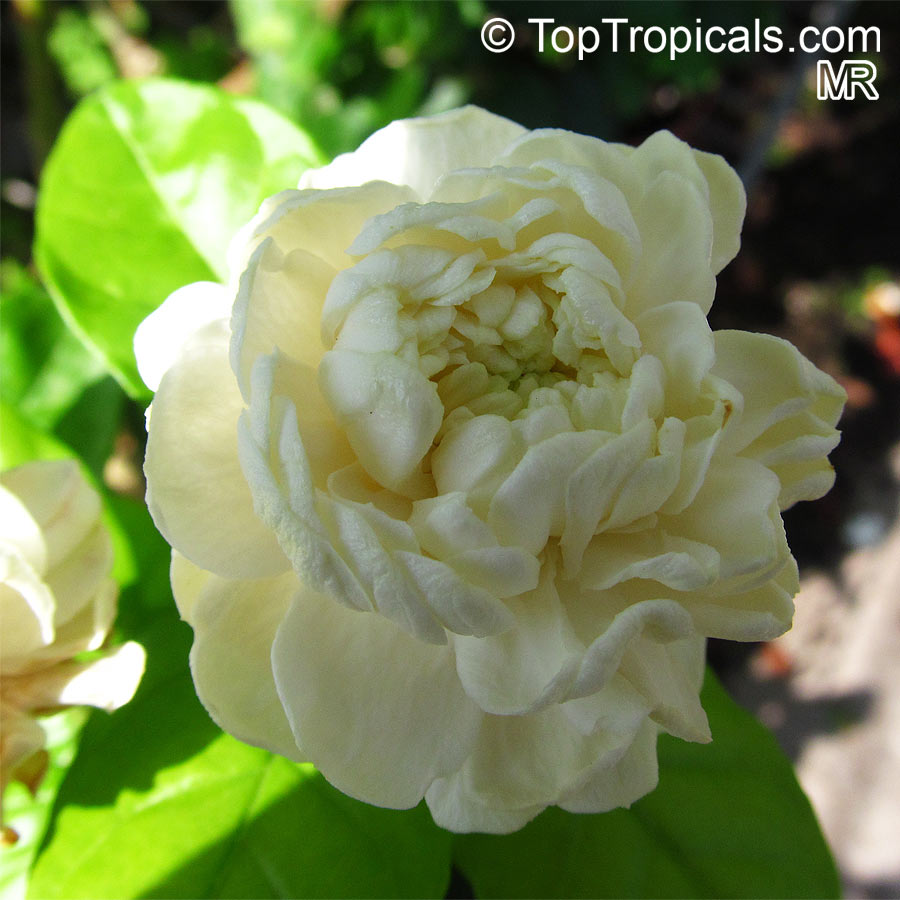
Jasminum sambac Grand Duke Of Tuscany, Nyctanthes sambac, Mogori Sambac, Butt Mograw, Hawaiian
Jasmine Sambac Absolute Botanical binomial: Jasminum sambac Family: Oleaceae INCI Name: Jasminum sambac flower extract Other names: Arabian Jasmine, Tuscan jasmine, Zambac, Nightblooming Jasmine Country of Origin: India Part of plant used in production: Flowering top Methods of production: Solvent Extract Description: From the Oleaceae family, J.
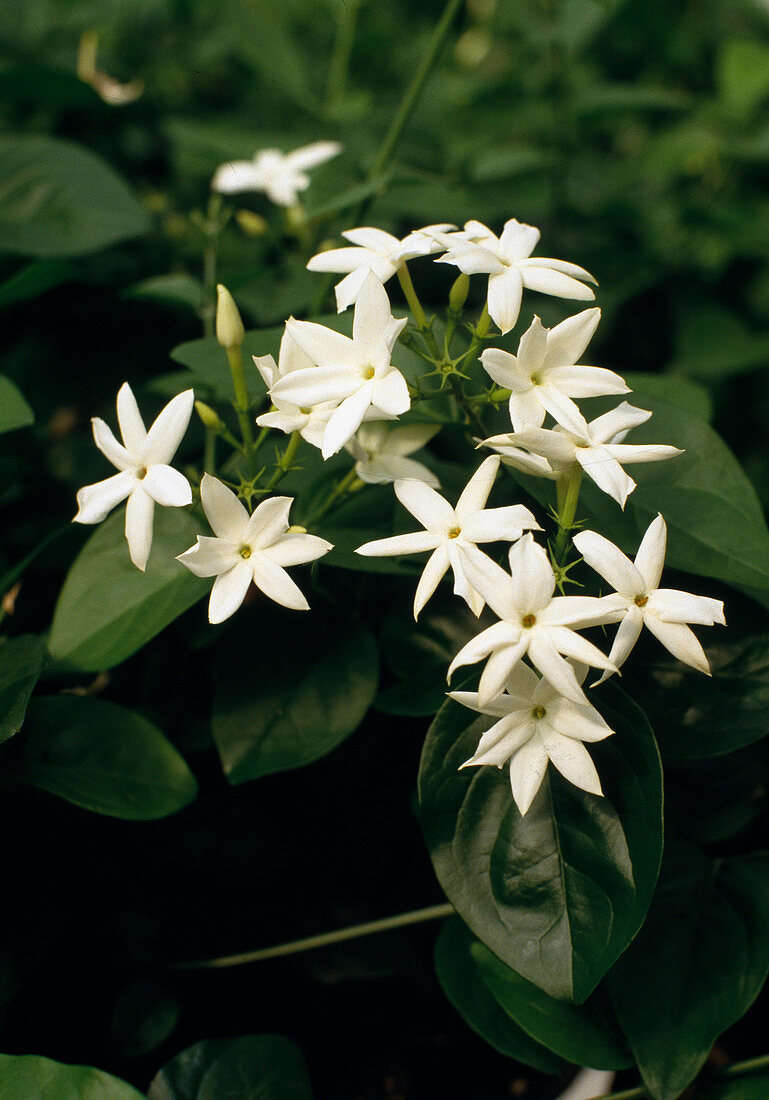
Jasminum sambac (Arabischer Jasmin) Bild kaufen 12216677 Gartenbildagentur Friedrich Strauss
Incorporate 3 or 4 inches of compost into the top 12 inches of soil using a spade, tiller or garden fork. Arabian jasmine requires rich, well-drained soil in an area exposed to at least four hours of direct sunlight a day to grow well. Every spring, add 2 inches of compost around each plant to continue to enrich the soil with essential nutrients.

jasminum sambac Rafael V Flickr
Jasminum sambac (L.) is a South Asian folkloric medicinal plant that has traditionally been used to treat cardiovascular problems. The current investigation was meticulously organized to explore the pharmacological foundation for the medicinal uses of J. sambac pertaining to cardiovascular ailments and to investigate the core mechanisms. Mechanistic investigation revealed that crude leaf.

Jasminum sambac Wholesale Nursery Nurseries in Melbourne, Sydney & Brisbane Plantmark
Water the plant well then add a 2" (5cm) layer of mulch, such as shredded bark, around the planting area. Keep the mulch at least 4" (10cm) away from the trunk of the plant as this can keep the bark too moist and cause it to decay. Depending on rainfall, new plants need to be watered weekly through the first growing season.
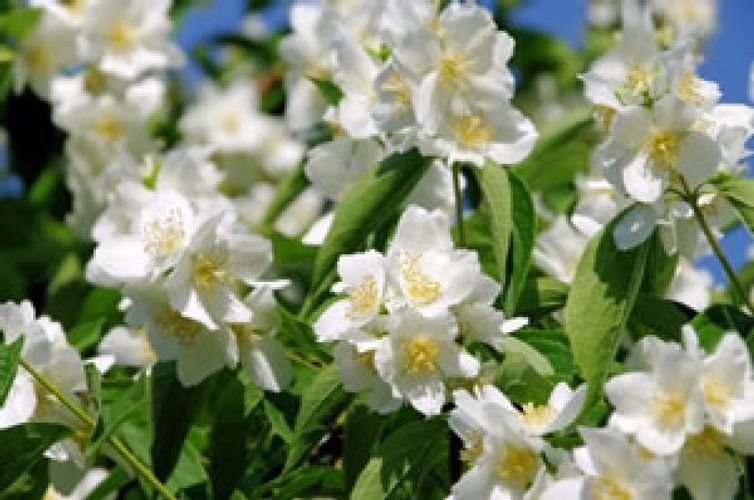
Jasminum Sambac arabischer Jasmin Sambac 60100 kaufen bei Hood.de
Der Arabische Jasmin (Jasminum sambac) zählt zur strauchförmigen Fraktion der Jasmine. Die großblütige, indische Jasmin-Art ist an höhere Temperaturen angepasst und verströmt ihr üppiges Parfüm im Sommer. Wuchsform und Liefergröße JAS-203S - Kletterpflanze, Topf 3 l, 60/80 cm JAS-207S - Kletterpflanze, Topf 7 l, 100/125 cm

PlantFiles Pictures Jasminum, Asiatic Jasmine, Pikake, Sacred Jasmine 'Grand Duke of Tuscany
Used to flavor jasmine tea in China, award-winner Jasminum sambac (Arabian Jasmine) is a twining or scrambling evergreen shrub with glossy dark green leaves and exceptionally fragrant waxy pure-white flowers, 1 in. across (2.5 cm). The blooms fade to pink as they mature.

017 Jasminum sambac
Description Jasminum sambac is an evergreen vine or shrub reaching up to 0.5 to 3 m (1.6 to 9.8 ft) tall. [10] The species is highly variable, possibly a result of spontaneous mutation, natural hybridization, and autopolyploidy.
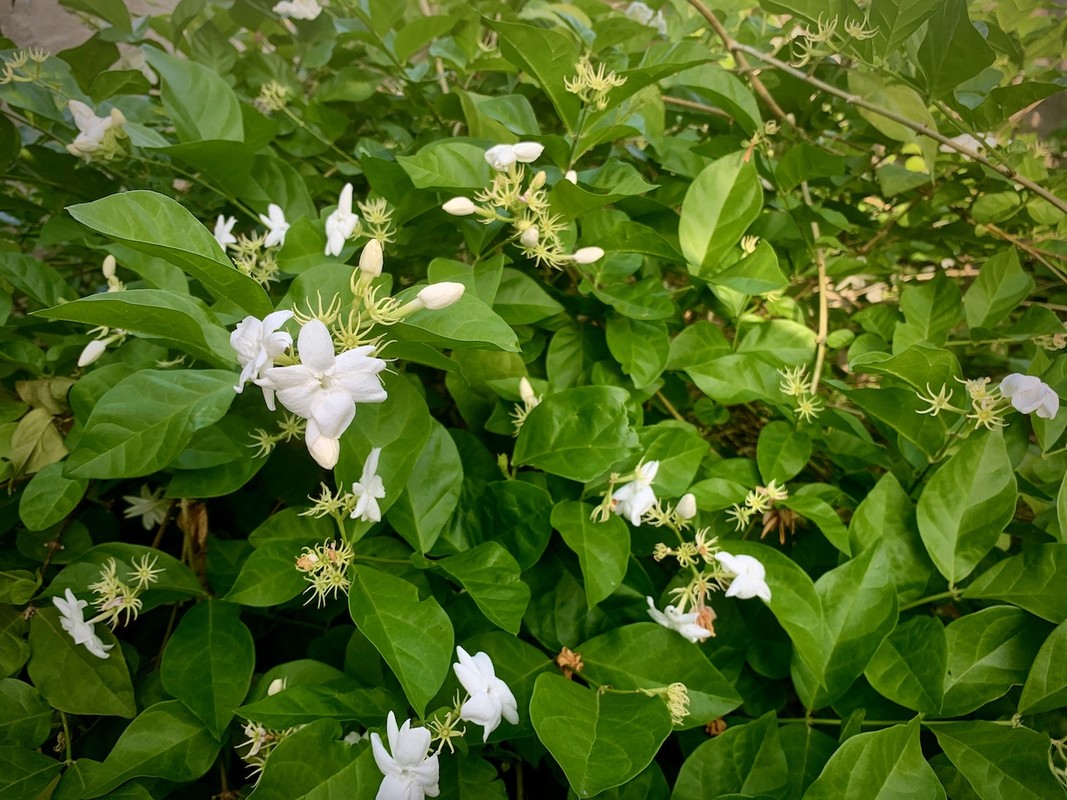
Jasminum Sambac of Jasmijn Malati
This datasheet on Jasminum sambac covers Identity, Overview, Distribution, Dispersal, Biology & Ecology, Environmental Requirements, Natural Enemies, Impacts, Uses, Prevention/Control, Further Information. Identity Preferred Scientific Name Jasminum sambac (L.) Aiton Preferred Common Name Arabian jasmine Other Scientific Names
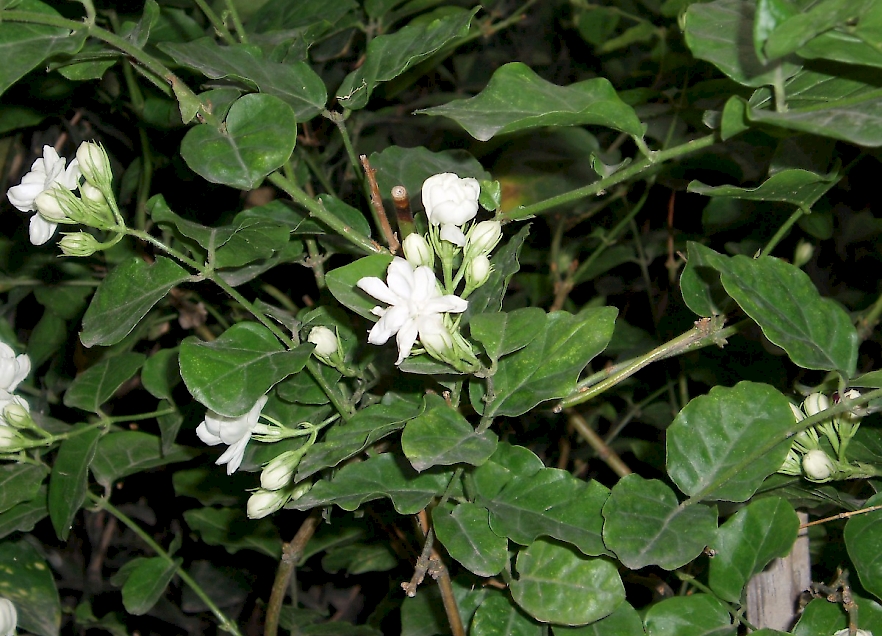
Jasminum sambac UF/IFAS Assessment University of Florida, Institute of Food and Agricultural
Jasminum sambac (L.) Aiton, Hort. Kew. 1: 8. 1789; Nyctanthes sambac L. . Hasta 2 m de alto. Hojas simples, obovadas, ampliamente elípticas o redondeadas, 4 11 cm de largo y 3 6 cm de ancho, ápice redondeado a obtuso, cortamente apiculado, base obtusa, cortamente vellosas en los nervios de ambas superficies y en las axilas de los nervios en el envés.

Jasminum sambac, Jasmine (0.25m) Noah Garden Centre
Sambac Jasmine, Arabian Jasmine, or Pikake (Jasminum sambac) is a tropical evergreen which produces a continuous show of fragrant flowers throughout the warmer months on well-established plants. These Jasmines are somewhat scandent or vine-like shrubs that can produce long canes from time to time that allows for the plant to be espaliered on a trellis or other vertical support if so desired.

Jasminumsambac Scent Stories
Der Arabische Jasmin kann als Kübelpflanze drinnen und draußen auftrumpfen. Erfahren Sie hier, wie Sie Jasminum sambac richtig pflanzen und pflegen. Jasminum sambac, wie Arabischer Jasmin botanisch genannt wird, gehört zu den Kletterpflanzen und blüht den ganzen Sommer über. Dann erfüllt der exotische Duft der Pflanzen die Luft.

Jasminum sambac by LuciRamms on DeviantArt
Jillian Dara The Spruce / Gyscha Rendy In This Article Care Varieties Pruning Propagating Growing from Seed Potting and Repotting Overwintering Arabian jasmine is famous for its fragrant flowers and its use in jasmine tea and leis. It is a fast-growing evergreen climbing shrub.
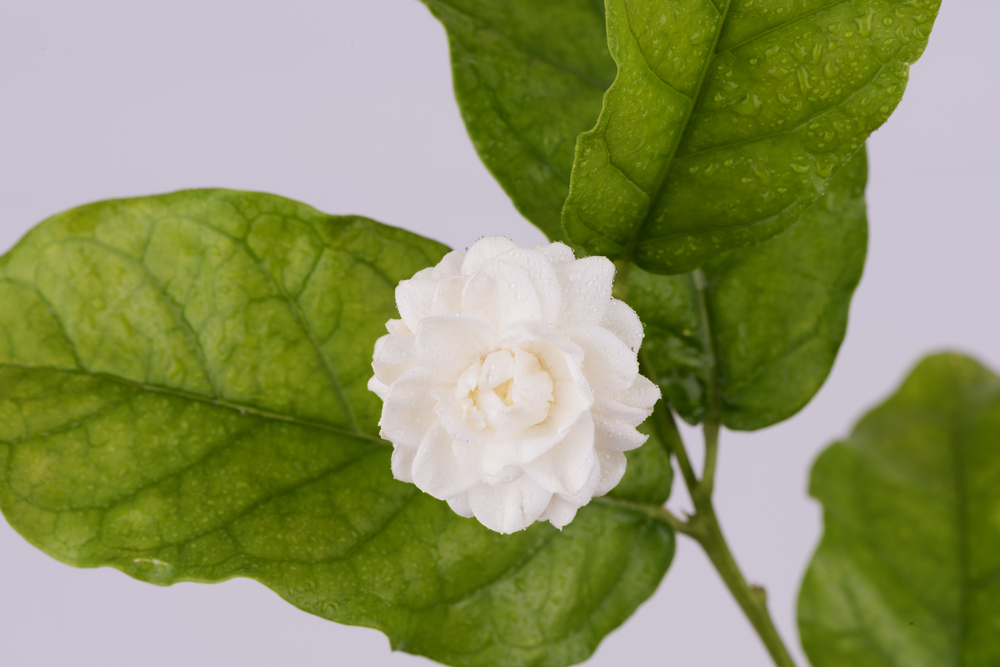
JASMINE SAMBAC OIL (Reconstituted) ITA Overseas Pte Ltd
Description. Jasminum Sambac (Arabian Jasmine) is one of the most beautiful plants you can grow indoors. It is a twining evergreen shrub with glossy green leaves and exceptionally fragrant pure white flowers. Jasmine Sambac 'Maid of Orleans' is very easy to grow and it blooms off and on throughout the year.
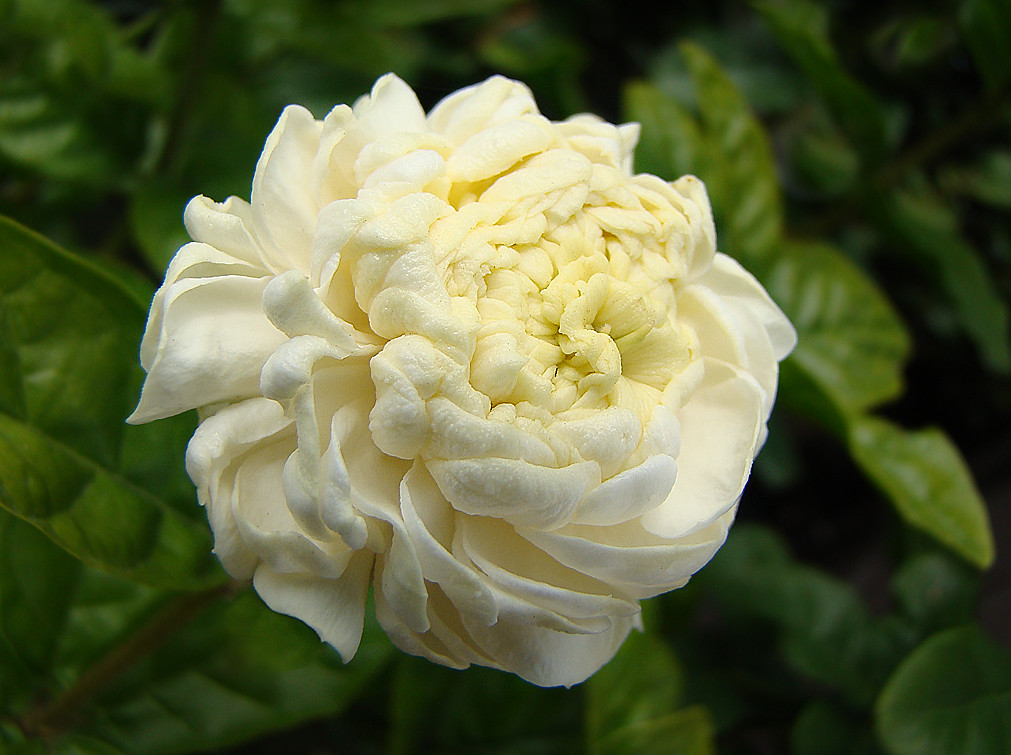
Arabian Jasmine Jasminum sambac 'Grand Duke of Tuscany' Flickr
Prepare the container by filling with potting soil up to 2" (5cm) from the rim of the planter. Make a small hole in the soil slightly larger than the root ball either by hand or using a trowel. Insert the plant into the hole and press soil firmly around the roots and just covering the root ball. When all the plants are potted, water.